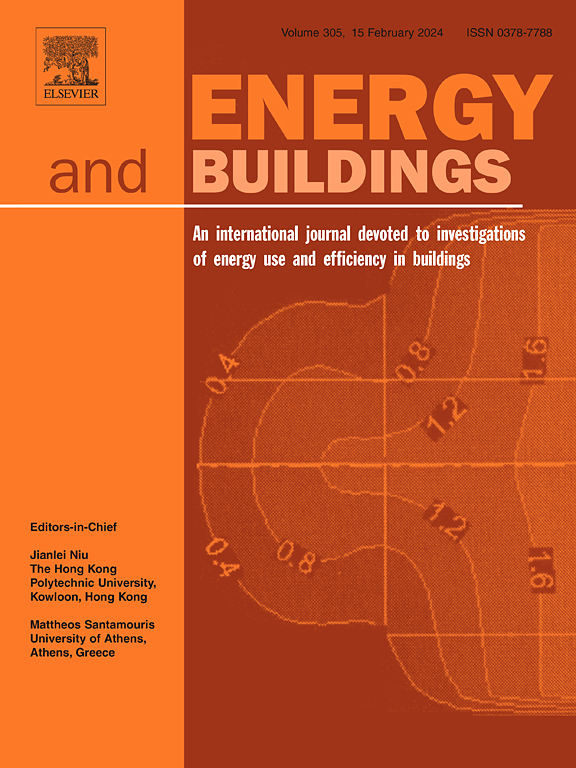Radiant heating systems control in buildings via Inverse Conformable Artificial Neural Networks and optimization techniques
IF 6.6
2区 工程技术
Q1 CONSTRUCTION & BUILDING TECHNOLOGY
引用次数: 0
Abstract
This study introduces an innovative methodology that integrates Inverse Conformable Artificial Neural Networks (CANNi) with Genetic Algorithms (GA) or Particle Swarm Optimization (PSO) to optimize thermal comfort in buildings. Emphasizing the efficacy of conformable transfer functions within CANNi, the research relies on a comprehensive dataset to forecast heat transfer across diverse climates. Notably, the methodology stands out for its meticulous model selection process, employing slope-intercept tests to ensure robust predictability (99%) and strong correlation between input and output variables. The selected model exhibits an optimal equilibrium between predictive precision and computational efficiency, reaching an R-value of 0.9992 with low RMSE (0.0078) and MAPE (2.1099). Such performance enables precise calibration of Radiant Floor Heating Systems (RFH) for enhanced comfort and marks a significant stride toward bolstering energy efficiency and sustainability within the construction sector. These findings advocate for more efficient utilization of energy resources in buildings, adeptly accommodating climatic fluctuations and enhancing the inhabitants’ quality of life.
通过反适应人工神经网络和优化技术控制建筑物中的辐射供暖系统
本研究介绍了一种创新方法,该方法将反适形人工神经网络(CANNi)与遗传算法(GA)或粒子群优化(PSO)相结合,以优化建筑物的热舒适度。该研究强调了 CANNi 中顺应性传递函数的功效,并依靠一个全面的数据集来预测不同气候条件下的热传递。值得注意的是,该方法的突出之处在于其细致的模型选择过程,采用了斜率-截距测试,以确保输入和输出变量之间的稳健可预测性(99%)和强相关性。所选模型在预测精度和计算效率之间实现了最佳平衡,R 值达到 0.9992,RMSE(0.0078)和 MAPE(2.1099)均较低。这种性能可以精确校准地板辐射供暖系统(RFH),从而提高舒适度,并标志着建筑行业在提高能效和可持续性方面取得了重大进展。这些研究结果倡导在建筑物中更有效地利用能源资源,巧妙地适应气候波动,提高居民的生活质量。
本文章由计算机程序翻译,如有差异,请以英文原文为准。
求助全文
约1分钟内获得全文
求助全文
来源期刊

Energy and Buildings
工程技术-工程:土木
CiteScore
12.70
自引率
11.90%
发文量
863
审稿时长
38 days
期刊介绍:
An international journal devoted to investigations of energy use and efficiency in buildings
Energy and Buildings is an international journal publishing articles with explicit links to energy use in buildings. The aim is to present new research results, and new proven practice aimed at reducing the energy needs of a building and improving indoor environment quality.
 求助内容:
求助内容: 应助结果提醒方式:
应助结果提醒方式:


